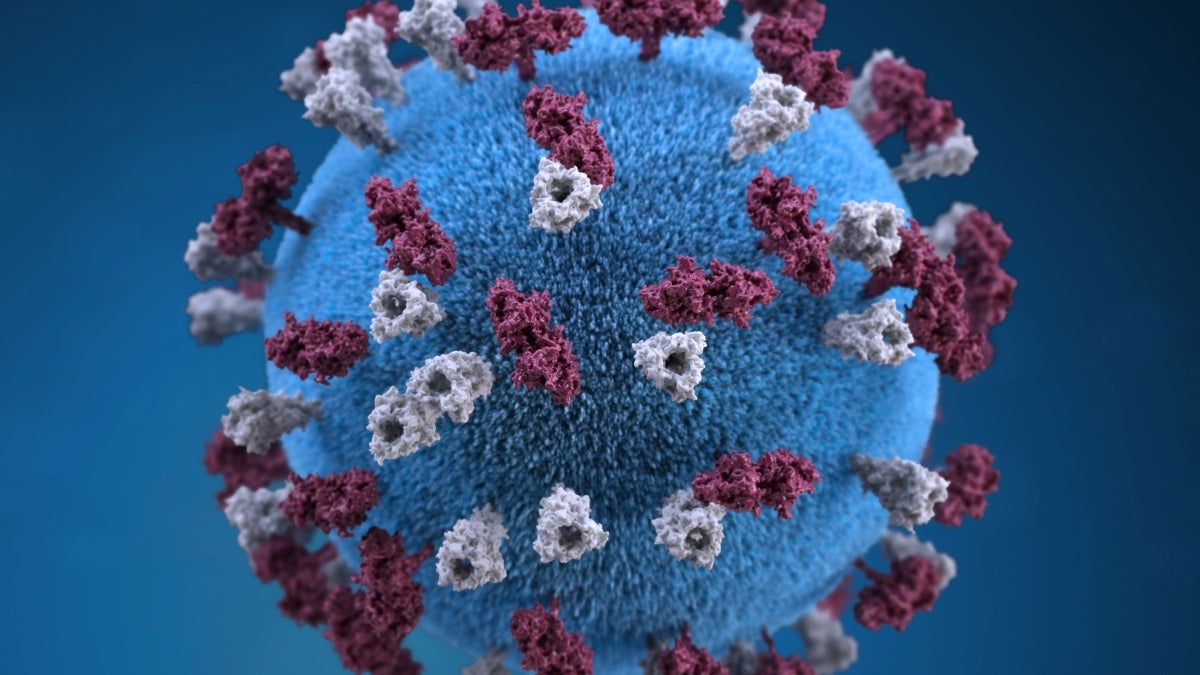A measles outbreak that has affected 71 people in the state of Washington has drawn national attention and prompted lawmakers on Capitol Hill to hold a congressional hearing on the matter.
While measles was eliminatedDefined by the Centers for Disease Control and Prevention as the absence of continuous disease transmission for greater than 12 months. from the United States in 2000 thanks to widespread vaccination programs, the disease is experiencing a resurgence due to declining vaccination rates.
To better understand the public health risks of a measles outbreak and the role of vaccines in preventing the spread of disease, ASU Now spoke to Swapna Reddy, clinical assistant professor, and Matthew Speer, faculty research associate, in the College of Health Solutions at Arizona State University.
Editor's note: Answers are a collaborative effort of Speer and Reddy.
Question: How safe and/or effective are vaccines?

Swapna Reddy
Answer: All major and reliable scientific sources in the United States support the efficacy of vaccines, which are held to very high and stringent safety standards. Vaccinations are consistently cited as one of top 10 greatest public health achievements in the last century.
One dose of MMR vaccine, which is intended to protect against measles, mumps and rubella, is 93 percent effective against measles, 78 percent effective against mumps and 97 percent effective against rubella. Two doses of MMR vaccine are 97 percent effective against measles and 88 percent effective against mumps. Those who have received both doses of MMR vaccine during childhood are considered inoculated for life.
Public discourse and controversy currently enveloping the vaccine debate often centers on the MMR vaccination. A widely circulated paper published by Andrew Wakefield in the Lancet in 1998 suggested that MMR vaccinations predisposed children to autism. That paper has since been completely retracted, as Wakefield and the other authors were found guilty of deliberate fraud. Numerous epidemiological studies have since refuted the falsified causative link between MMR vaccination and autism.
Despite the proven efficacy of MMR vaccination and all others included on the Centers for Disease Control and Prevention (CDC) recommended immunization schedule, many parents remain hesitant or unwilling to vaccinate their children due to safety or philosophical concerns. While there can be some adverse side effects, these are very rare and often much less severe than the disease that one would be inoculated against.
Prior to widespread adoption of MMR vaccinations, between 450 and 500 people in the United States died each year from the measles. Symptoms of the virus include a high fever, cough, runny nose, and red, watery eyes. Measles is highly contagious and can be especially dangerous for babies and young children, who may experience pneumonia, brain damage, deafness or death as a result.
Q: How is public policy used to encourage or discourage higher rates of vaccination?

Matthew Speer
A: All 50 states and the District of Columbia have laws that require children entering child care or public school systems to adhere to the CDC recommended immunization schedule, although there is no federal law that requires this. All states also offer medical exemptions for children with specific conditions that preclude them from vaccination requirements.
There are also nonmedical exemptions allowed by some states on the basis of religious and personal beliefs, or philosophical beliefs. There are currently 47 states that offer exemptions for religious reasons, and 18 that allow exemptions for philosophical reasons. Although there is significant variability between states regarding the specific requirements imposed upon those seeking nonmedical exemptions, parents typically must submit a one-time or annual form attesting to their religious or philosophical objection.
States that allow nonmedical exemptions tend to be at greater risk of vaccine-preventable disease (VPD) outbreaks. Arizona state policymakers, therefore, play a critical role in the prevention of another VPD outbreak.
Arizona currently offers both medical and personal belief exemptions, though one bill being proposed by the state legislature would add a religious belief exemption (House Bill 2470). Other bills would require physicians to offer an antibody titer blood test to determine whether a child should be immunized (House Bill 2472), and provide parents with information about vaccines, risks, as well as the process for filing a complaint in response to a vaccine injury (House Bill 2471). Each of these three measures would fundamentally loosen vaccination requirements and likely lead to an increase in the number of unimmunized schoolchildren in a state already boasting some of the highest rates of nonmedical exemptions in the country. This week, however, Arizona Governor Doug Ducey declared that he would “not sign any law that doesn't promote or extend vaccinations in the state of Arizona,” suggesting he would veto any of the three aforementioned measures.
Q: What is “herd immunity,” and how does it prevent the spread of disease?
A: Herd immunity occurs when a sufficiently high proportion of individuals within a community are inoculated against a disease, thereby disabling that disease from spreading.
This concept of herd immunity, also known as “community immunity,” is especially important as children who cannot receive vaccinations for medical reasons rely on other children and the larger society to stay inoculated. Children who receive a medical exemption are often immunocompromised or have previously experienced a severe allergic reaction to a vaccine component, and are therefore reliant upon herd immunity for protection against VPDs.
They are particularly vulnerable in areas with lower-than-recommended rates of vaccination. In this way, it is important for parents and caretakers to recognize that the decisions they make to not vaccinate their own children can have potentially life threatening effects on other children who are not able to make those choices.
Q: What are the public health risks of a vaccine-preventable disease outbreak?
A: Metropolitan Phoenix is widely considered to be one of the most susceptible locations in the United States to a major measles outbreak. Whereas the herd immunity threshold for measles typically requires a minimum vaccination rate of 95 percent or more, state data show that only 93 percent of kindergarteners in Maricopa County were fully immunized last year.
In Maricopa County, if an outbreak of a vaccine-preventable disease takes place, children who are unvaccinated for any reason would be kept out of school for a minimum of 21 days. In this way, a measles outbreak can have serious educational consequences, in addition to the health risks.
The World Health Organization has declared "vaccine hesitancy" among those reluctant or refusing to vaccinate their children to be a global health threat in 2019.
- So far this year, there have already been five documented measles outbreaks across the country, including 66 confirmed cases in Washington — an outbreak that prompted Governor Jay Inslee to declare a state of emergency in late January.
- At least 36 students attending a private school in North Carolina were affected by chicken pox late last year, where 110 of 152 students have claimed a religious belief exemption.
- An outbreak of measles originating in Madagascar in September 2018 is suspected of infecting more than 68,000 people and killing over 900, with infants and children at greatest risk.
- The California measles outbreak originating at Disneyland in December 2014 saw 147 people infected across multiple states, after which state legislators quickly moved to eliminate all nonmedical exemptions.
For more information about the MMR vaccine, visit the Centers for Disease Control and Prevention.
Top photo: This illustration provides a 3D graphical representation of a spherical-shaped, measles virus particle that is studded with glycoprotein tubercles. Illustrated by: Alissa Eckert / Courtesy: CDC
More Health and medicine

Reducing waste in medical settings
Health care saves lives, but at what cost? Current health care practices might be creating a large carbon footprint, according to ASU Online student Dr. Michele Domico, who says a healthier…

ASU offers bilingual counseling to Spanish speakers
Arizona is one of the five states in the nation with the highest percentage of Hispanic residents, according to the U.S. Department of Health and Human Services Office of Minority Health, and …

College of Health Solutions launches first-of-its-kind diagnostics industry partnership to train the workforce of tomorrow
From 2007 to 2022, cytotechnology certification examinees diminished from 246 to 109 per year. With only 19 programs in the United States, the cytology workforce that stands at the front line of…


